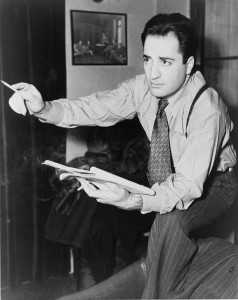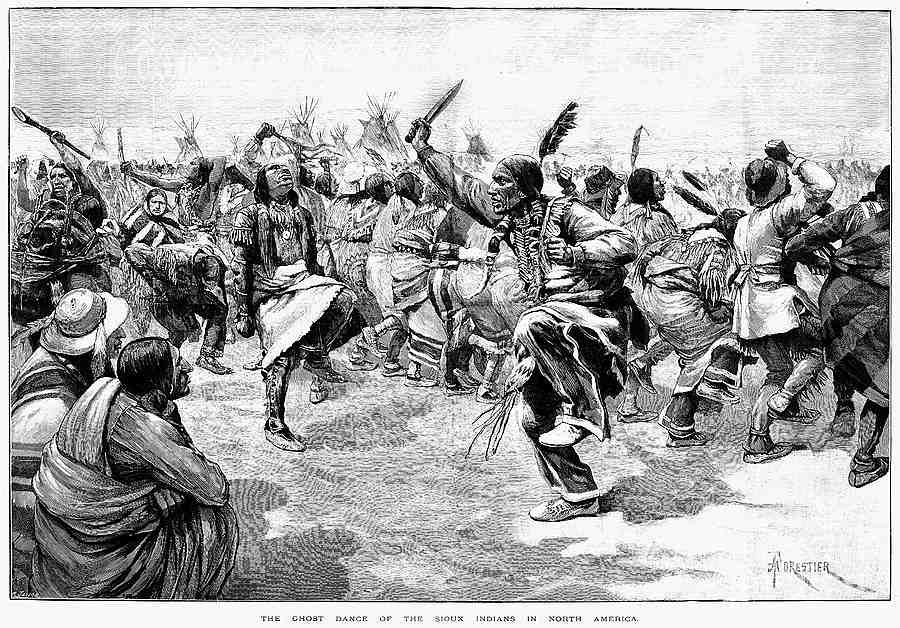150 YEARS AGO (1865)
Less than six months after the Civil War’s end, an ad publicizes a black minstrel group claiming to consist of former Georgia slaves. The troupe’s manager, Charles Hicks, will later write, “I started the first company of genuine Negro minstrels that had been successful in touring America.”
125 YEARS AGO (1890)
In Oklahoma, 3,000 Native Americans attend a Ghost Dance, performing the ritual each evening for two weeks, though spiritual leader Wovoka, champion of the religious movement/performance, had advised presenting it far less often. This extended version signals wide adoption of the form, which unites more than 30 tribes, helping combat attempts by whites to erase Native American identity.
100 YEARS AGO (1915)
Future orchestrator Hans Spialek is fighting in World War I for Austria on the Russian front when he is wounded by a bayonet. Despite treatment on the battlefield with needle and thread and no anesthesia, his impaled hand will heal, and he will go on to become one of Broadway’s leading orchestrators, with nearly 150 shows to his credit, ranging from Anything Goes to On Your Toes.
85 YEARS AGO (1930)
Kay Swift becomes the first female composer to pen the complete score for a hit Broadway musical when Fine and Dandy—with lyrics by Paul James, book by Donald Ogden Stewart, and “many nonsensical moments created by” star Joe Cook—opens at the Erlanger’s Theatre (later known as the St. James). Though it’s the Great Depression, the production will run for 255 performances.

75 YEARS AGO (1940)
The original Broadway staging of Armenian-American writer William Saroyan’s The Time of Your Life begins a return engagement a few months after the play received the Pulitzer Prize in drama—to the consternation of its author. In May Saroyan declined the honor, saying he doesn’t believe in cash prizes for the arts. Columbia, which selects the winners, respectfully acknowledged Saroyan’s viewpoint but stated that its decision stands, and mailed him the $1,000 check.
75 YEARS AGO (1940)
Performer Tallulah Bankhead attends the funeral of her father, Speaker of the House William B. Bankhead. By the evening she is at the Hershey Community Theatre in Pennsylvania, where she plays her one-performance engagement of The Little Foxes, part of a summer tour. One paper reports that Bankhead “respond[s] to four curtain calls.”
60 YEARS AGO (1955)
Paul Muni leaves the Broadway production of Inherit the Wind to have his left eye removed due to a tumor. He will return to the role in December, and his work in the production will earn Muni his sole Tony. Though he will live till 1967, it marks his final appearance on Broadway.
50 YEARS AGO (1965)
The NEA and the NEH are born when President Lyndon B. Johnson signs the National Foundation on the Arts and the Humanities Act. The two entities will go on to offer steady, if sometimes controversial, support for U.S. cultural production.
50 YEARS AGO (1965)
Seattle’s ACT (A Contemporary Theatre) concludes its first season with Peter Shaffer’s The Private Ear/The Public Eye. Established by Gregory A. Falls to create theatre that captivates audiences, while adopting the informality of the time, ACT has no dress code. For the rest of the remaining decade, the organization will be the city’s only theatre committed to contemporary work featuring local artists.
45 YEARS AGO (1970)
Sister Joanna Chan, a Chinese-born Catholic nun, meets with four members of her drama group in NYC’s Chinatown, choosing the name Four Seas Amateur Players (later called the Four Seas Players) and formalizing their mission. Since November, the company—which operates out of Chan’s church—has boasted 60 participants, including not only Asian Americans but also community members of Puerto Rican and Italian descent. The ensemble will become one of the U.S.’s largest Chinese repertory troupes.
 15 YEARS AGO (2000)
15 YEARS AGO (2000)
The Denver Center Theatre Company, in association with the Royal Shakespeare Company, begins performing the Peter Hall–directed Tantalus, with actors from the U.S., England, Europe, and Asia. John Barton’s 10-play cycle about the Trojan War is presented in 3 parts, over the course of 2 days, clocking in at 10-plus hours.


